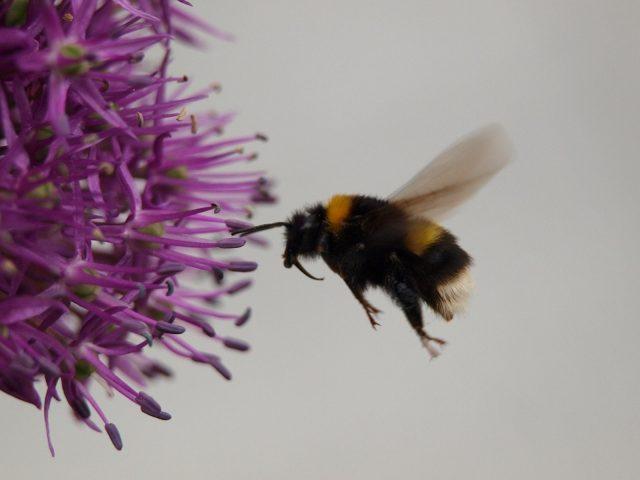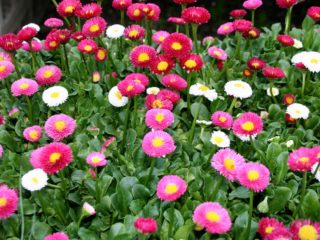Content
Aflutinsky onion (lat. Allium aflatunense) is a perennial herbaceous crop that is a representative of the Onion family. Unlike its close relatives, which are widely used in cooking, it has found application in ornamental gardening. The popularity of the culture is explained by its beautiful early flowering, when many plants are just awakening after winter, and its unpretentiousness to growing conditions. However, in order for a perennial to be able to fully develop and delight with its decorative appearance, you need to know how to plant it correctly and provide care taking into account the requirements of the culture.

Aflutinsky onion in appearance is in many ways similar to the Dutch type of culture
Origin
It is believed that this plant comes from Kyrgyzstan, where it grows on the pass of the Chatkal ridge. It has been cultivated for a very long time. And the increased interest of gardeners in the crop contributed to the development of new hybrid forms. The first description of decorative types of aflutin onion was given by Karl Lineus in the 18th century. However, who exactly originally discovered the wild form of the plant is unknown.
Description of Aflatun onion
The growing season of the perennial begins in early spring, as soon as the snow melts.Initially, belt-shaped large leaves appear, forming a basal rosette, up to 25-30 cm high. They have a bright green tint and are covered with a bluish coating. The length of the plates reaches 50 cm, and the width is about 11 cm. Their edges are smooth.
As soon as the air temperature warms up to +10 °C, thin stems, hollow inside, begin to grow from the center of the rosette. Their height reaches 80-150 cm, depending on growing conditions. On the surface of the shoots you can see faint veins.
At the beginning of May, the aflutin onion blooms. Its buds are small, consisting of five petals, which are arranged in the shape of a star. The flowers of the Aflutin onion come in blue, purple and white shades; when fully opened, their diameter does not exceed 0.5 cm. They are collected in apical spherical inflorescences, up to 10 cm in size. After pollination of the flowers, numerous seed pods are formed.
The underground part of the Aflutin onion is presented in the form of a round-conical bulb. Its diameter does not exceed 5 cm, and the shade of the peel is gray.

The flowering time of aflutin onion is 2-3 weeks.
Is it possible to eat
This plant is considered ornamental. However, just like onions, it can be eaten. Moreover, both the leaves and bulbs of the crop are edible. Young plates of aflutin onion can be added to salads before the flowers appear, as long as they retain a delicate consistency. It is recommended to bake, marinate, and cook the underground part of the plant in honey after first soaking it in water for many hours. The leaves of the aflutin onion have a pleasant garlicky taste, and the bulbs are more reminiscent of radishes and radishes.
Beneficial features
This perennial has medicinal properties. The plant contains four times more ascorbic acid than onions. It is also characterized by a high content of vitamins D and E.
The main beneficial properties of aflutin onion:
- strengthens the immune system;
- relieves brain spasms;
- improves vision, hearing;
- increases potency;
- dissolves and removes stones from the kidneys and gall bladder;
- normalizes the functioning of the digestive organs;
- treats colds;
- prevents the formation of cancer cells.
The plant can also be used externally. Rubbing the juice of aflutin onion into the scalp activates the work of hair follicles and strengthens them.
Application
Translated from Latin, the name of the aflutin onion means “victorious”. In ancient times, the plant was believed to increase strength and endurance, so it was included in the diet of Roman soldiers. It was also used as a talisman against evil spirits and the evil eye.
Now Aflutin onions are most often used for decorative landscaping of personal plots. The culture looks impressive in group plantings, creating a lush carpet of dense spherical inflorescences that rise on thin shoots.
In this case, it is recommended to plant up to 50 plant bulbs per 1 square meter. m. Such plantings look great against the background of trees, shrubs, and conifers. Aflutinsky onion can also be used in multi-level compositions, planted in the background. The plant looks good in combination with tulips and daffodils, which successfully mask the fading leaves of this perennial.
Aflutin onions are also used to create winter bouquets.In this case, it is recommended to cut the inflorescences before the formation of seeds and dry them naturally in a dark place. In this form they remain decorative for several months.

Aflutin onion is an excellent honey plant
Planting aflutin onion
Growing a crop does not cause difficulties even for a novice gardener, but in order for the plant to be able to fully develop and delight with lush flowering every year, you must first of all plant it correctly.
For the plant, it is preferable to choose sunny, open areas, protected from cold gusts of wind. But it is also permissible to plant it in partial shade, but in this case flowering will occur later, and the diameter of the inflorescences will be smaller.
The culture is not demanding on the composition of the soil. For her, the main thing is that the soil is air- and moisture-permeable, loose, and neutral. Aflutin onions can be planted in depleted sandy soil, black soil, and loams.
Planting should be done at the end of August, beginning of September. In this case, the bulbs must be buried 15 cm into the soil. After this, they must be sprinkled with earth and watered abundantly. There is no need to cover the plant for the winter after planting.
Caring for aflutin onion
The culture does not require complex care. During the growing season, it is enough to promptly remove growing weeds around and loosen the soil at the base of the plant. This will maintain air access to the roots. Also, during prolonged drought, it is recommended to periodically water the aflutin onion. Moisturize at the root in the evening, using settled water at a temperature not lower than +15 ° C.
To maintain high decorativeness, perennials need to be fed twice a season.The first time to apply fertilizers is at the beginning of its growing season. During this period, it is necessary to pour nitroammophoska at the base at the rate of 20 g per plant, followed by embedding it in moist soil.
It is recommended to fertilize the aflutin onion for the second time at the stage of formation of peduncles. At this time, it is important to use 40 g of superphosphate and 25 g of potassium sulphide per bucket of water. It is recommended to water the perennial with the resulting solution at the rate of 1 liter per plant.
Reproduction
Aflutin onion can be propagated by daughter bulbs and seeds. The first option is quite simple. To do this, you need to dig up the plant after flowering, divide it into bulbs and dry it in a dark place. After this, the planting material must be stored in a cool place until the end of summer, and then planted. Aflutin onions need to be replanted every five years. Otherwise, its inflorescences become smaller.
When propagating the crop from seed, it is necessary to cut off the flower stalks of the plant in early August. After this, they need to be placed on the windowsill and dried. It is recommended to plant seeds in late autumn in rows to a depth of 2 cm. After this, lightly compact the soil surface and water abundantly in the absence of rain. With the arrival of spring, shoots appear. They need to be provided with proper care throughout the growing season. In the third year, it is recommended to plant young seedlings.

Seedlings grown from seeds bloom in the fourth year after sowing
Diseases and pests
Aflutin onion has increased natural immunity. But if the growing conditions are inappropriate, the perennial’s resistance to diseases decreases.The plant can be affected by powdery mildew, fusarium, gray rot and rust. Therefore, for prevention, it is recommended to treat the leaves with 1% Bordeaux mixture every spring. It is also necessary to water the aflutin onion several times during the season with a solution of Maxim and Previkur Energy.
Among the pests that can cause damage to perennials are spider mites, aphids, and thrips. When damaged, the growth of aflutin onion stops, the shoots grow short, the inflorescences become small, and flowering is short-lived. There is also the appearance of light spots along the edges of the leaves. In this case, it is necessary to treat the plant with chemicals twice at intervals of 5-7 days. For this, it is recommended to use Actellik, Fufanon, Fitoverm. When repeatedly spraying a perennial, the preparations must be alternated to prevent insects from becoming addicted.
Conclusion
Aflutinsky onion is an unpretentious perennial whose popularity is growing every year. This is due to its excellent survival rate in almost any climatic zone. The plant is also less susceptible to air pollution and high frosts. However, the perennial has one significant drawback - yellowing of the leaves even during the flowering period, which reduces its decorative value. Therefore, it is recommended to plant other spring bulbous or low-growing conifers in front of the aflutin onion.








